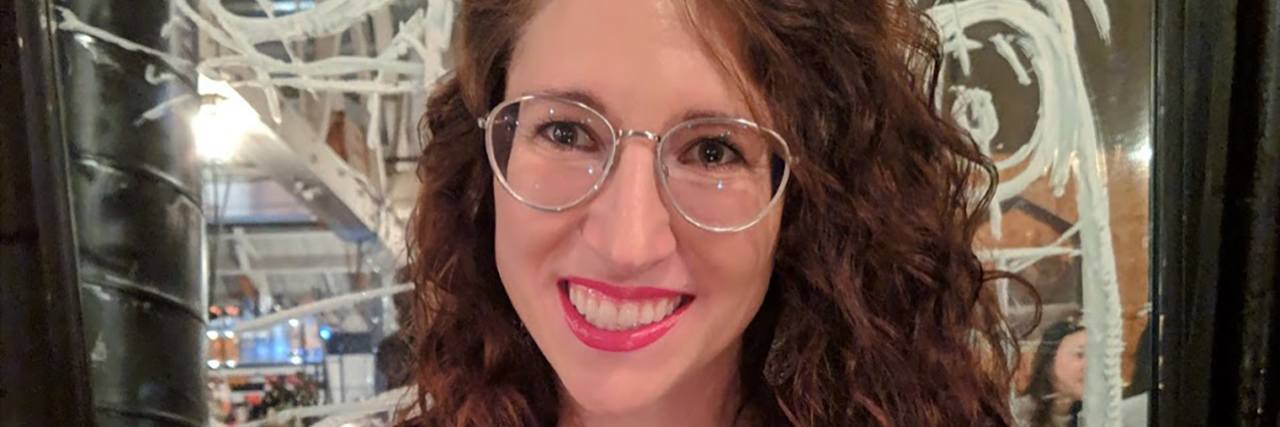Amidst the current resurgence of the Black Lives Matter movement and the celebration of LGBTQ pride, I have come across admirable efforts to educate. I have appreciated the Black and LGBTQIA creators of literature, podcasts, music, and memoirs for helping me better understand diverse lived experiences of oppression. I write this not to dilute or distract from the potency of racism in the United States or from the celebration of LGBTQIA rights, but instead because I wish to share in efforts to elucidate realities about marginalized experiences.
Before my vision deteriorated, I admittedly had no concept of blindness. My lived experience and connection to members of the blind community have given me a more nuanced perspective, and I hope to share this information to help answer questions or clarify misconceptions about blindness.
1. Myth: Blind people see all black.
Fact: Blindness is a spectrum, and many blind people have some functional vision. On one end of the blindness spectrum is seeing absolutely nothing. Though I haven’t had this experience, I have heard that for most, the experience is not seeing all black, but instead is an absence of sight. Have you eaten something with your nose clogged — and not kind of clogged, but completely, totally clogged? If so, you have likely experienced being unable to taste. You could not describe the flavor because there is an absence of information. That lack of input is what blindness is like. There simply is no visual information.
On the other end of the blindness spectrum is the threshold of legal blindness. Visual acuity worse than 20/200 with correction (glasses or contact lenses) constitutes legal blindness. This means that even with correction, the legally blind person sees from 20 feet away what a typically-sighted person can see from 200 feet. Although everyone’s visual experience is a little different, for me, when I saw 20/200, I could recognize people around 15 feet away and read print using enlarged text (e.g. 24 point font). Complete lack of sight is rare; most blind people perceive some light and shapes.
2. Myth: Blindness is stable.
Fact: Many forms of blindness lead to differences from day to day and over the course of weeks and years. Blindness varies between people and within people over time. I experience fluctuations I affectionally referred to as “bad vision days.” My cause of vision loss is degenerative, which means it continues to change over time. Even within a day, my degree of functional vision changes dramatically.
I hear this facet of blindness is hard for sighted people to understand sometimes. I like to describe it as more intense experiences of typical visual fluctuations. For example, most sighted people will have a difficult time seeing upon walking into a dark room after being outside in the sun. Most sighted people will experience eyestrain after using a laptop for long hours. For me, these visual changes are far more exaggerated and longer-lasting and generalizes to other visual experiences like glare.
3. Myth: Blind people like to feel faces.
Fact: I have never met or heard of a blind person wanting to feel others’ faces. That is all.

4. Myth: When someone loses sight, their other senses get stronger.
Fact: When someone loses sight, they may learn ways to rely on other senses more, and reliance on other senses can lead to changes in the brain. My senses of hearing, taste, smell and touch work the same way they did before I lost my sight. I have, however, learned to use other senses in lieu of vision. To illustrate, I use my sense of touch to determine whether a surface is clean. Using my sense of touch instead of vision does not inherently mean my sense of touch is stronger. Over time though, I have spent years relying on non-visual senses and I have now trained myself to use these senses. For instance, I have learned to listen to books and podcasts at increasing speeds, often four to five times the average listening speed. Though I have no way of confirming, I imagine this has changed my brain’s wiring.
5. Myth: You can tell if someone is blind.
Fact: You usually cannot tell someone is blind. Though some people use assistive tools like white canes and guide dogs, many blind people do not. A Google search indicates that only 2-8 percent of blind people use white canes and 5 percent use guide dogs. The vast majority of blind people, like myself, often navigate without a visible form of mobility assistance. It is also a myth that you can tell someone is blind by looking at their eyes. While some blind people have forms of vision loss that influence their eye movements and focus, many blind people can and will direct their gaze to where they are focusing even with very low functional vision. I have been told I appear to make eye contact most of the time, despite the reality that when I look at someone they disappear into my blindspot.
6. Myth: Blind people wear dark sunglasses all the time.
Fact: Some blind people wear sunglasses or tinted lenses, some do not, and others’ use varies. Because there are diverse causes of vision loss and diverse experiences of vision, some people benefit from tinted lenses. Personally, I have learned that blue light blocking glasses are really helpful for reducing eye strain. I also wear dark sunglasses outdoors and benefit from green-tinted lenses when it is cloudy. I am especially sensitive to glare and will wear sunglasses inside if the sun is shining in, otherwise I usually only wear blue light blocking lenses indoors. Lenses come in diverse shades — amber, green, yellow — and it can be helpful to work with a low vision specialist to try out the various options.
7. Myth: Blind people don’t care about appearance.
Fact: Many blind people care about appearances; there are diverse preferences just as there are with sighted people. Blind people can and do care to create an aesthetic in their style and in their physical spaces. How? Many blind people have had some sight and may have visual preferences. Many also rely on sighted people for assistance. My friends and family know my preferences, often better than I do, and help me identify items that express who I am. Again, blind people come in all varieties — some like doing their make-up, some like decorating their homes, some take immense pleasure in fashion.
A key thread across many of these myths pervades across culture and identity: there is diversity in lived experiences, preferences, and expressions. Some blind people are obsessed with interior design. Some blind people use a cane. Some blind people wear tinted glasses. Not all blind people cannot see anything. And frankly, no blind people go around touching people’s faces. A step towards mitigating bias and discrimination is creating empathy through understanding.
A version of this piece was originally posted at Voicing Vulnerability.
Getty image by Ron Bailey.

